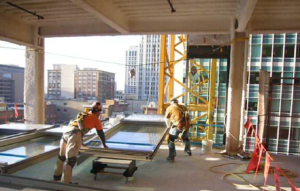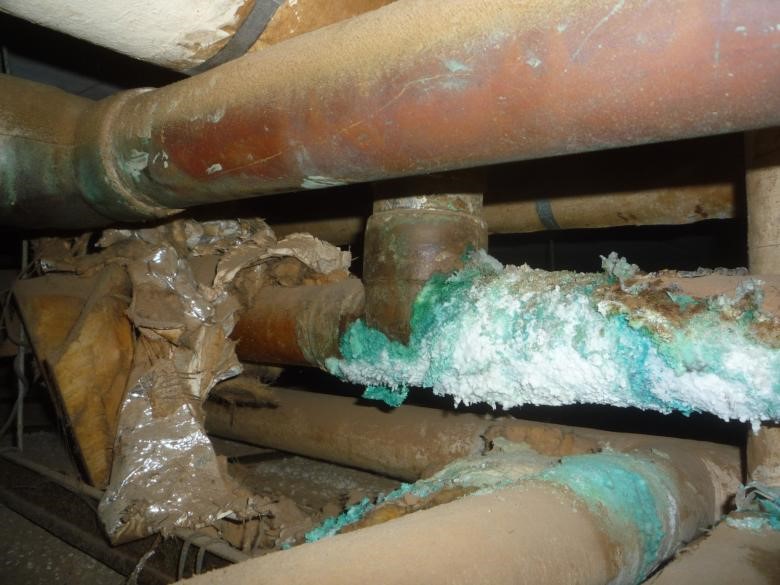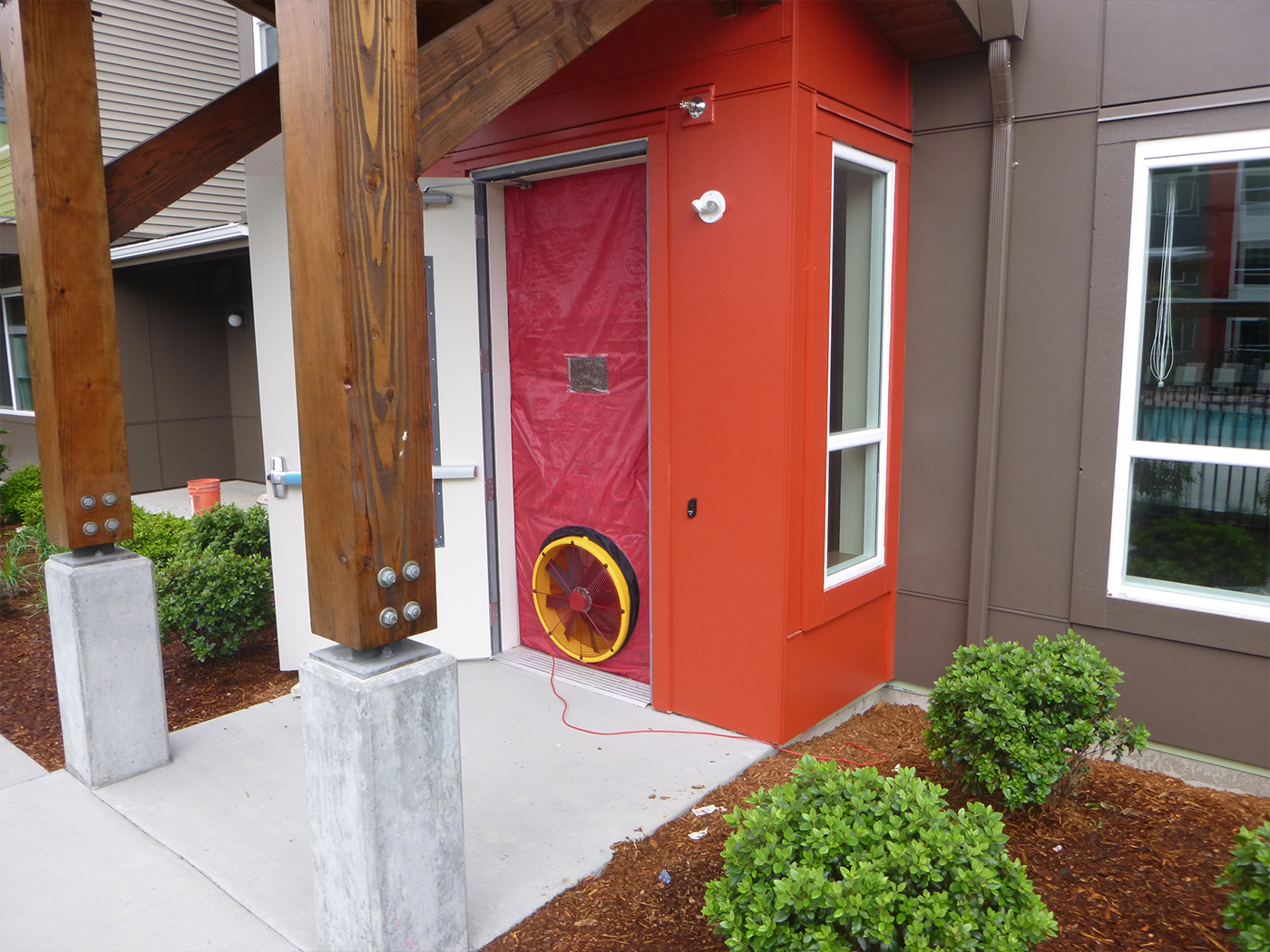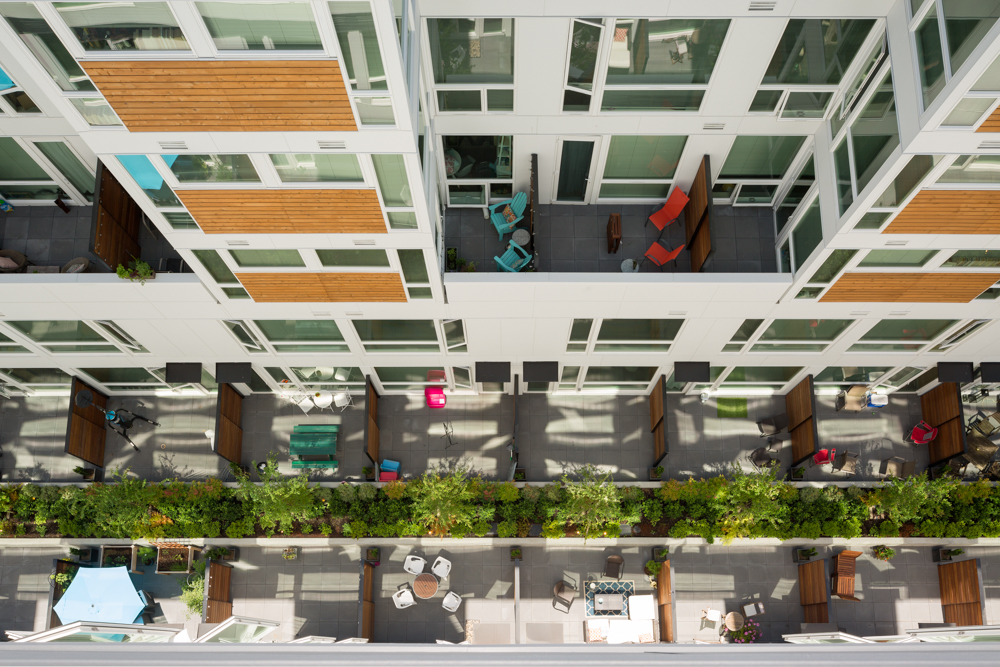Glazed Curtain Wall Systems
In a general sense, the term “curtain wall” refers to an exterior wall that does not support loads other than its own weight. Curtain walls are therefore non-structural, and serve solely to protect the building from the elements.
Curtain walls are typically exterior walls that do not carry floor or roof loads, according to the Whole Building Design Guide. Wind loads and the curtain wall’s gravity loads are transferred back to the structural support of the building, and are typically thin, aluminum framed with glass panels or thin stone panels that “hang” like a curtain from the build’s structural element. A typical glazed curtain wall system is often a metal frame (usually aluminum) with in-fills, which can be glass, brick veneer, metal panels, thin stone or precast concrete.
5 Common Problems & Solutions
- Water and Air Infiltration – Water intrusion causes interior damage and can promote biological growth. To resolve water infiltration, water testing is essential to understand the source and to confirm repair and performance. Failures often include workmanship related, premature degradation of internal and external seals, and or fabrication/design. Seal failures can often result in air infiltration, which can cause condensation on window frames resulting in water damage and cause energy loss
- Aluminum Coating Failure – When finishes are properly applied, they are high performance and can last in excess of 20 years. However, coatings can prematurely fail due to application issues. To resolve applied finish issues, glazing survey, samples, and laboratory testing is often needed.
- Insulated Glazing Unit (IGU) Failure – Most modern exterior glazing consists of dual or triple paned glass. The air gap between panes is sealed with inert dry air with desiccants to soak up moisture during manufacturing. Dual silicone and PIB sealants are used to keep air and moisture out. Failure of these seals can result in IGU failure causing fogging and corrosion of Low-e silver coatings.
- Traffic Noise – When outside noise is an issue, you can retrofit the glazing in your building with laminated glass, which reduces sound and provides a 99% UV screen.
- Condensation – When the temperature of the glass or aluminum frame in the curtain wall reaches a dew point temperature on the interior space, condensation occurs. Basic design, such as thermal breaks and insulated glass, can prevent this. Failures can result from unintended thermal bridges and air leakage.
Learn More About Glazing
Most Common Failures – water damage, glass damage/breakage, poor thermal performance, poor visual performance, construction and design errors, and installation errors.
Aluminum coating failure shown below.

Moisture Damage
Moisture damage is the most common type of failure in curtain wall sections. Water infiltration creates premature deterioration of the wall structure, finish damage, biological growth, and decreased interior air-quality (Schwartz, 2001). This situation can be easily prevented in initial curtain wall design and construction of the assemblies and the system installed in the building. Repairs from poor water protection are often expensive to fix, but can be easily mitigated with attention to design and use of effective materials and sealants.
Moisture damage can be classified into two distinct parts; water infiltration and condensation. Water infiltration creates the largest potential for moisture damage to a building. The primary water prevention tool is sealants, which inhibit water penetration into a curtain wall (sealants can break apart or shrink as they age). Sealants are known to break away because of poor adhesion or improper application. Add to that the thermal expansion coefficient, where the difference of metal expansion is 2.5 times that of glass, enabling large relative displacements to cause sealants to break. A perfectly water-tight designed curtain wall cannot be maintained by sealants alone. The general rule when considering curtain wall water penetration is to not rely entirely on sealants. Redundancy in water protection that incorporates an in-wall drainage system, as well as carefully considered sealant, is the best way to avoid water infiltration and to mitigate or minimize water damage.
In order to properly ensure an effective curtain wall design, laboratory and field mock-ups are necessary based on American Architectural Manufacturers Association (AAMA) tests 501.1, AAMA 501.2, ASTM E331, ASTM E547, ASTM E1105 (Viegener and Brown, 2010).




